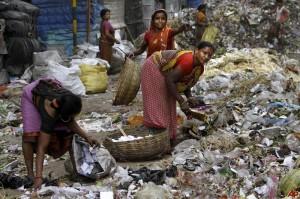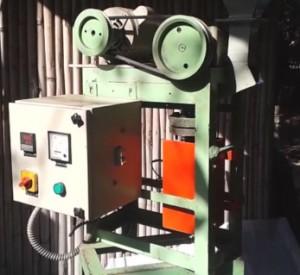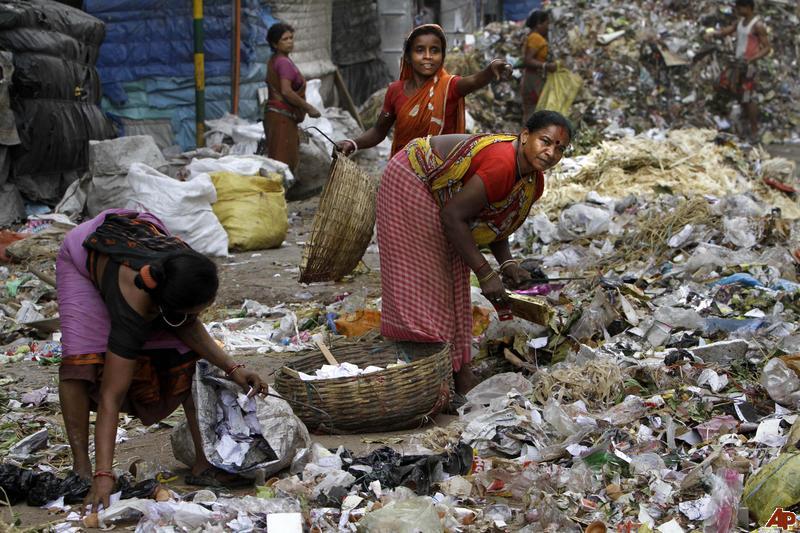The job commonly known as ‘rag picking’ or ‘waste picking’ has been around for as long as humans have been discarding things. The waste pickers perform an important function by sorting through the refuse and pulling out anything that can be reused – the last word in recycling. There are people all over the world participating in this activity as a way of earning a living, mostly in developing countries but also to a lesser degree in post-industrial countries.
 In India, the legions of rag pickers are the source of one of the country’s few green credentials, its high recycling rate. It’s hard to know exactly how many people use rag picking as a way of earning a living. In Delhi alone, it is estimated that there are more than 300,000 waste pickers earning between 100 – 150 rupees for a day’s work. As a result of their intensive recycling efforts, the city saves approximately 600,000 rupees per day in waste disposal costs.
In India, the legions of rag pickers are the source of one of the country’s few green credentials, its high recycling rate. It’s hard to know exactly how many people use rag picking as a way of earning a living. In Delhi alone, it is estimated that there are more than 300,000 waste pickers earning between 100 – 150 rupees for a day’s work. As a result of their intensive recycling efforts, the city saves approximately 600,000 rupees per day in waste disposal costs.
There are, however, an increasing number of initiatives that are diminishing the availability of trash to the waste pickers. These range from city governments beginning to privately contract waste management companies for trash removal, to the completion of trash incineration facilities that reduce all of the waste to ash. These initiatives are generally tied to efforts to clean up India’s cities, largely to help improve its public image.
MIT graduate Sidhant Pai, however, is involved in his own plans to deal with India’s trash. Pai is the founder of the startup Protoprint, a social enterprise in Pune, India. Through Protoprint, waste pickers in India are being given access to the technology necessary to turn the waste plastics they collect into 3D printer filament. The filament produced is marketed globally as a recycled alternative to virgin filament, at a competitive price. Protoprint partnered with SWaCH (a local waste picker co-operative) in 2011.
On their website, Pai described their process for empowering the waste pickers:
“There are over 2 million waste pickers in India that spend their days trawling through garbage, separating plastic waste from organic waste. Unfortunately, they earn very little for the important work that they do. We partner with waste picker cooperatives and set up filament labs at dumpsites to process the plastic waste. At these sites, we train waste pickers to use low cost technology to scan, clean, shred, and extrude the plastic into 3D printer filament.”
The lab where the waste pickers bring their HDPE plastics is equipped with a ‘FlakerBot’ for shredding plastic and a ‘RefilBot’ for converting the shredded plastic into filament.
Creating filament from waste plastics is more complex than it might initially seem. Different 3D printers use filament with differing chemical compositions, and a variety of sizes. The next phase in Protoprint’s development will be to work on the standardization of sizes and qualities of filament, in order to create a greater compatibility between printers and the Protoprint filament.
As a result of this partnership, waste pickers are able to earn, on average 15 times more than they would for raw plastic material in the same amount. This effort by Protoprint is one of a number of efforts to introduce sustainable practices to 3D printing and to show that advanced technology and green initiatives are not at odds with each other.
Discuss this amazing initiative in the ProtoPrint forum thread on 3DPB.com
Subscribe to Our Email Newsletter
Stay up-to-date on all the latest news from the 3D printing industry and receive information and offers from third party vendors.
You May Also Like
Profiling a Construction 3D Printing Pioneer: US Army Corps of Engineers’ Megan Kreiger
The world of construction 3D printing is still so new that the true experts can probably be counted on two hands. Among them is Megan Kreiger, Portfolio Manager of Additive...
US Army Corps of Engineers Taps Lincoln Electric & Eaton for Largest 3D Printed US Civil Works Part
The Soo Locks sit on the US-Canadian border, enabling maritime travel between Lake Superior and Lake Huron, from which ships can reach the rest of the Great Lakes. Crafts carrying...
Construction 3D Printing CEO Reflects on Being Female in Construction
Natalie Wadley, CEO of ChangeMaker3D, could hear the words of her daughter sitting next to her resounding in her head. “Mum, MUM, you’ve won!” Wadley had just won the prestigious...
1Print to Commercialize 3D Printed Coastal Resilience Solutions
1Print, a company that specializes in deploying additive construction (AC) for infrastructure projects, has entered an agreement with the University of Miami (UM) to accelerate commercialization of the SEAHIVE shoreline...
































